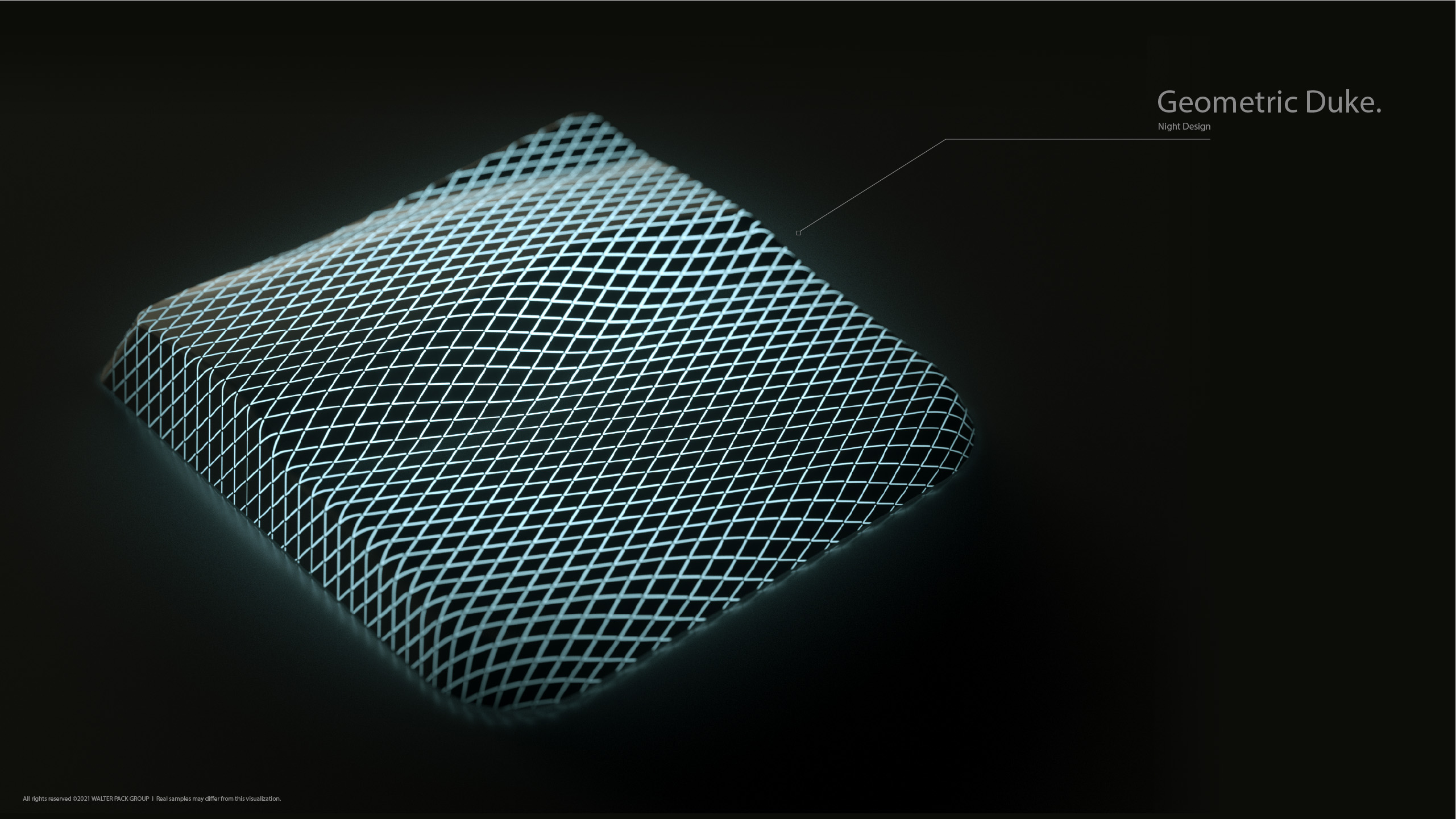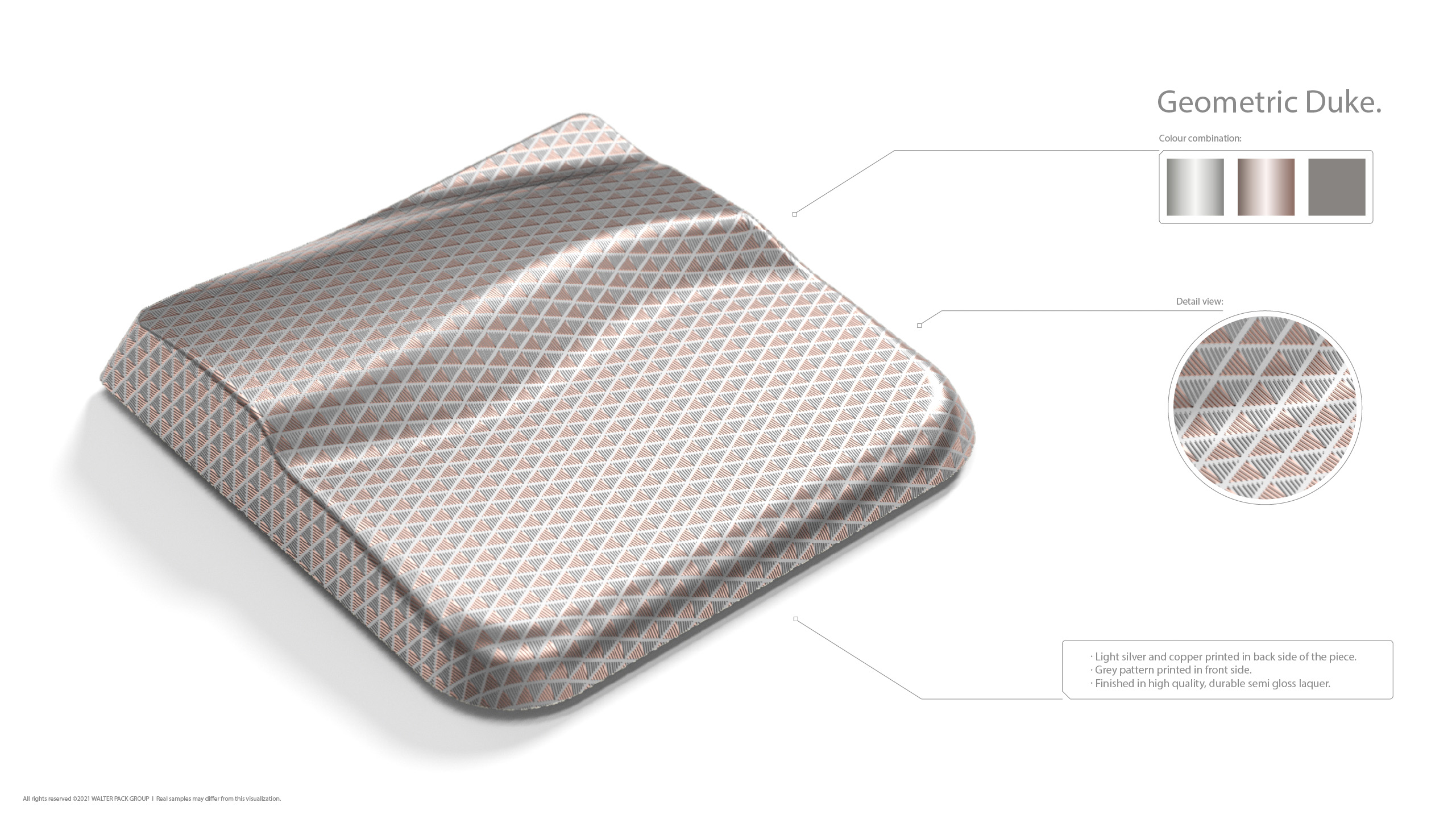INSIDE WALTER PACK
R&D, the heart of the company
Walter Pack’s Research and Development Department is the “soul” of the company, the driving force that allows it to respond to the needs of its clients and even anticipate market demands in order to shape future trends.
For example, several years ago, the team developed the ghost effect, a technology that combines the decoration of plastic components with specific backlighting, which causes a “day and night” effect that has already been used by two automotive giants, Audi and BMW. Or who have contributed to the design of avant-garde finishes that have become true hallmarks of leading brands in their respective sectors.


From a dream
Knowledge transfer
Work sources
Members of the Department hold regular meetings throughout the year at which they share their insights into the present and future needs of the industry, and consider the contributions they can make to sectors such as automotive and consumer electronics, among others. "This work is what helps clients to be inspired by our proposals," explains Erhardt. Efforts in this area are enhanced thanks to the fundamental collaboration of its partner, Grupo Antolín, with whom they are able to create fully functional prototypes and demonstrators integrated in a real environment, thus enabling a greater scope of the work carried out.
The joint work of Walter Pack with local research centres, universities and other countries is essential to establish a network of collaborative work and to bring concrete projects to light, to create new materials and to enable complementary functionalities. "It is a joint, transversal and evolving work with our partners in which we all innovate continuously," says Iñigo Erhardt.
On other occasions it is the clients themselves who come to Walter Pack with a simple sketch or an idea to ask the R&D Department to work on it, develop it and make a functional proposal. "In this case, we turn an idea or a need into a prototype that incorporates the functionalities required," explains Gorka Litago, a member of the department.
Attending trade fairs, checking new patents and benchmarking allow Walter Pack to keep up-to-date with new market developments in order to study them and, if necessary, incorporate them into its processes with a clear objective: to always remain at the forefront and implement the most efficient processes and technologies.
Challenges
Large manufacturers are looking for comprehensive suppliers capable of designing solutions that combine cutting-edge design with maximum functionality. "Nowadays, parts are no longer only decorated but also incorporate functions such as sensors, backlighting, etc. The market demands integrated solutions with high added value produced by a single supplier, and this forces us to implement innovative processes," explain the members of the R&D department.
Although the incorporation of new materials and functionalities in plastic parts often leads to an increase in the size of components, there are sectors such as consumer electronics that impose size restrictions on their components: this means that smaller and smaller but equally efficient solutions must be devised. Smaller in terms of interior space occupation, but larger in visible dimensions (seamless).
The sophistication of the market and the various international regulations mean that clients are placing increasingly higher technical requirements on the components they order, which, in turn, incorporate greater complexity and functionalities. These requirements are related to optics, electricity and lighting, among others, and are in addition to those governing the decoration of plastic parts. Walter Pack's R&D department must meet these demands.
Large industrial manufacturers and suppliers such as Walter Pack are becoming increasingly sensitive to social demands in terms of environmental protection. "At Walter Pack, we are fully aware of and committed to the environment, and the current trend is towards the use of recycled components and materials and sustainable waste management," says Erhardt. In addition to all this, the company is committed to increasingly cleaner and more efficient production processes, a present and future trend.